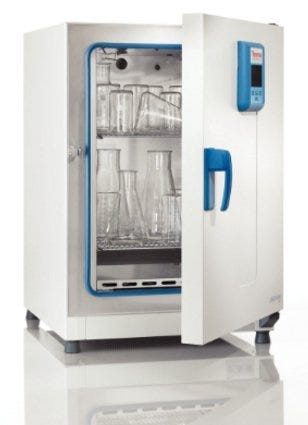Laboratory ovens are used in a wide range of applications in industries such as biotech, pharmaceuticals and materials manufacturing. These industries often require the process of baking, curing, annealing and drying materials of varying chemical and physical compositions. Many of these process applications are unique in their end-result and require assorted types of lab ovens.
Process Definitions
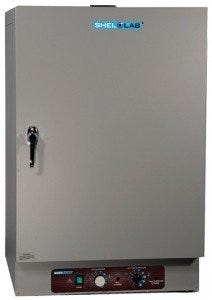
Gravity Convection Economy Ovens by Shel-Lab feature double-wall insulation and low-watt density heater
Baking heats the substance without dehumidification. Pharmaceutical, manufacturing and material science labs will often use gravity convection ovens for this type of application.
Curing hardens the chemical composition of a substance through the combined action of drying and baking. This process is often used in the manufacturing of epoxies, glues, plastics and rubber in polymer research, nanotechnology and semiconductor industries.
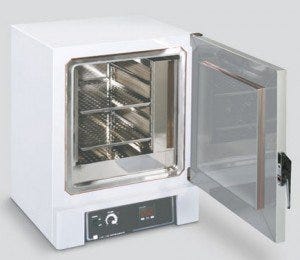
Class 100 Cleanroom Oven with HEPA filter by Thermo Fisher
Annealing heats, then cools material (glass or steel) for the purpose of developing its ductility. A myriad of applications in metallurgy, medical device manufacturing and material science industries use high-temperature ovens for this process. Stainless steel cleanroom ovens are used by the healthcare industry to anneal plastics onto syringes and catheters.
Drying, a ubiquitous use for lab ovens, removes moisture from samples. Gravity convection, forced-air and vacuum ovens are used for standard drying procedures by environmental, biological and clinical laboratories. Extremely labile biological samples with excessive moisture or low heat tolerance are best suited for forced-air or vacuum ovens. These types of ovens remove moisture and lower the boiling point of water allowing the sample to be dried at a lower temperature.
Standard and Specialized Lab Oven Applications
Standard applications of most laboratory ovens involve heating and drying glassware or autoclaving lab supplies for sterilization purposes. Laboratory ovens are also commonly used for performing material testing to determine tensile strength, deformation, and resiliency of many manufactured products. Standard use for lab ovens includes testing and troubleshooting processes such as these:
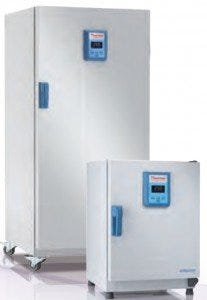
Heratherm General Protocol Ovens by Thermo Fisher for standard heating and drying applications
- Electronics testing
- Burn-in test for detecting early failures in manufactured integrated circuits
- Solder strength testing in circuit boards
- Accelerated simulations to measure prolonged product use
- Curing to catalyze a chemical reaction and alter the chemical nature of advanced polymers
Specialized use of lab ovens are done in biological, forensic and environmental labs. Here are a few examples of how the natural sciences are utilizing laboratory ovens to advance the pace of research:
- Forensic labs use specially configured vacuum ovens as fingerprint development chambers
- Biological laboratories employ gravity convection ovens for removal of microbiological contaminants in labware and vacuum ovens for adhering substrates to the surface of filters and other media
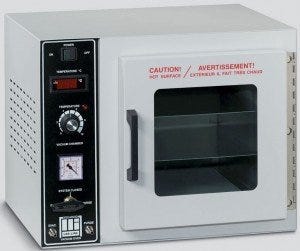
Vacuum Oven by Thermo Fisher heats up to 220°C
- Environmental laboratories dry specimens in laboratory ovens, weighing the samples before and after drying, to determine the moisture content of the sample. Gravity convection and forced-air ovens are used for these types of processes
Types of Lab Ovens
When considering a laboratory oven, take into account the types of applications you will be performing. High-temperature, vacuum, gravity or mechanical convection ovens are available with features for general and specialized use with options for advanced security. These types of ovens are mostly used in clinical and pharmaceutical labs. Forced-air, multi-purpose ovens are versatile units with a fast recovery feature ideal for drying glassware. Vacuum ovens are ideal for materials requiring an inert atmosphere. Stainless steel cleanroom ovens are available with HEPA filtration that helps meet ISO 5 (Class 100) compliance requirements and conditions.
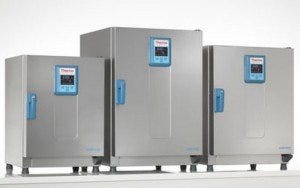
Heratherm Advanced Protocol Security Ovens by Thermo Fisher with automatic under-temperature alarm
Different types of laboratory ovens are equipped with features that will satisfy many industry applications, which is why strong consideration must be paid to the specifications of the oven. Visit Laboratory-Equipment.com to find out more about the different types of lab ovens available to meet your lab’s process applications.



